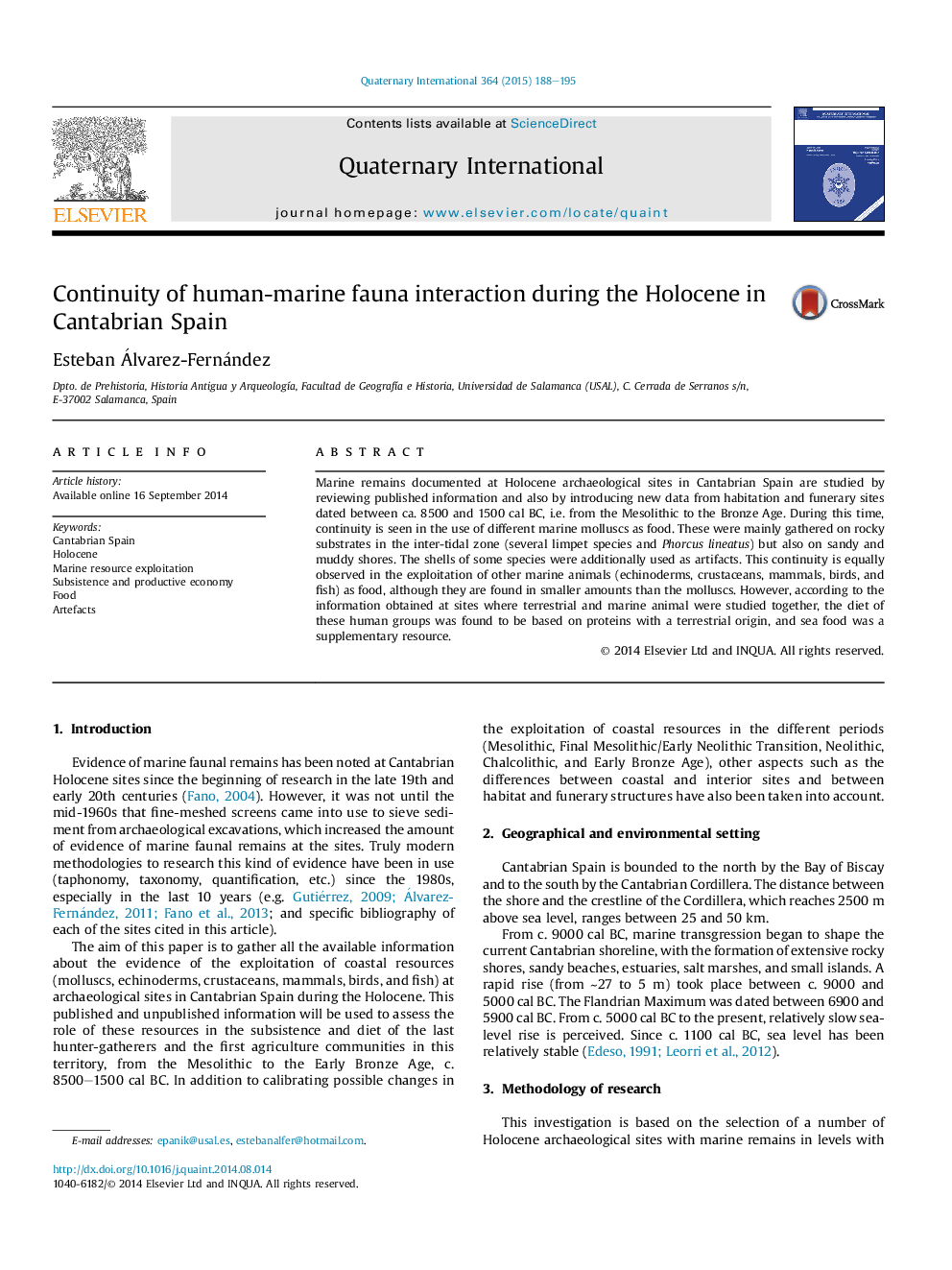| Article ID | Journal | Published Year | Pages | File Type |
|---|---|---|---|---|
| 1040884 | Quaternary International | 2015 | 8 Pages |
Marine remains documented at Holocene archaeological sites in Cantabrian Spain are studied by reviewing published information and also by introducing new data from habitation and funerary sites dated between ca. 8500 and 1500 cal BC, i.e. from the Mesolithic to the Bronze Age. During this time, continuity is seen in the use of different marine molluscs as food. These were mainly gathered on rocky substrates in the inter-tidal zone (several limpet species and Phorcus lineatus) but also on sandy and muddy shores. The shells of some species were additionally used as artifacts. This continuity is equally observed in the exploitation of other marine animals (echinoderms, crustaceans, mammals, birds, and fish) as food, although they are found in smaller amounts than the molluscs. However, according to the information obtained at sites where terrestrial and marine animal were studied together, the diet of these human groups was found to be based on proteins with a terrestrial origin, and sea food was a supplementary resource.
